San Antonio is a city situated in the southern region of Texas, which is known for its unique and diverse bird populations. The city is home to more than 300 bird species, ranging from year-round residents to seasonal migrants.
San Antonio’s varied landscapes, including rivers, parks, and green spaces, provide essential habitats for these feathered inhabitants.
Birds like hummingbirds, hawks, woodpeckers, and songbirds can be spotted in San Antonio throughout the year, making it a prime location for birdwatching enthusiasts.
With its beautiful climate and an incredible variety of avian species, San Antonio is undoubtedly a paradise for bird lovers.
1. Great-Tailed Grackle
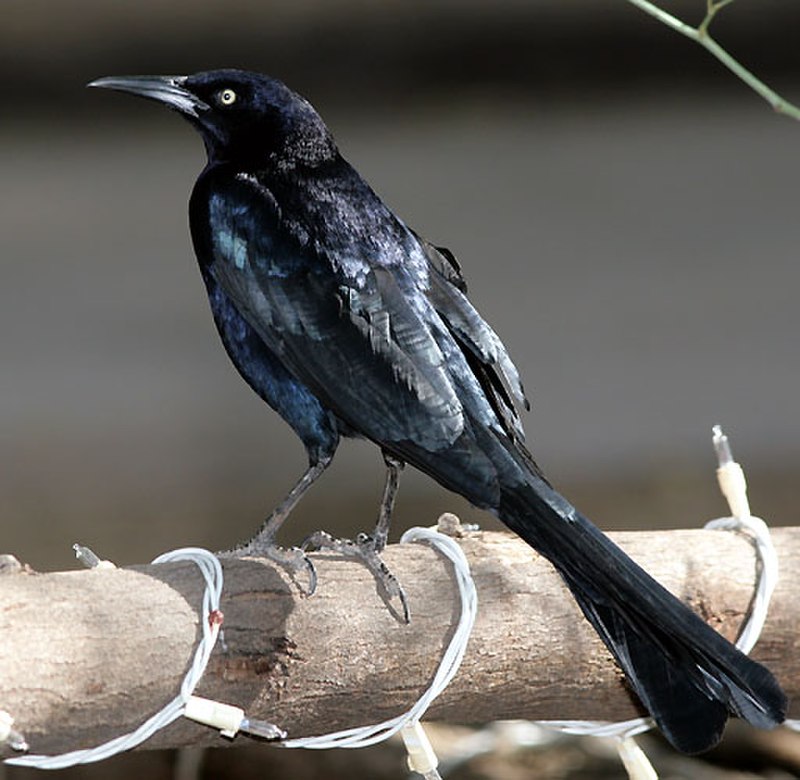
The Great-tailed Grackle is a medium-sized bird native to North and South America. It belongs to the family Icteridae, making it closely related to two other species of grackles – the Boat-tailed and Slender-billed.
They are highly social birds which often appear in large flocks or colonies.
Their plumage ranges from glossy black with blue or purple iridescence, through brownish-grey shades depending on location.
In some areas, they have been known as “blackbirds” due to their predominately dark coloring.
This adaptable species is also renowned for its distinctive long tail feathers – hence its name.
Scientific classification:
| Kingdom | Animalia |
| Phylum | Chordata |
| Class | Aves |
| Order | Passeriformes |
| Family | Icteridae |
| Genus | Quiscalus |
| Species | Q. mexicanus |
Also Featured In: Top Birds Found in Mexico, Common Birds That Live in Las Vegas
2. Black-Bellied Whistling Duck
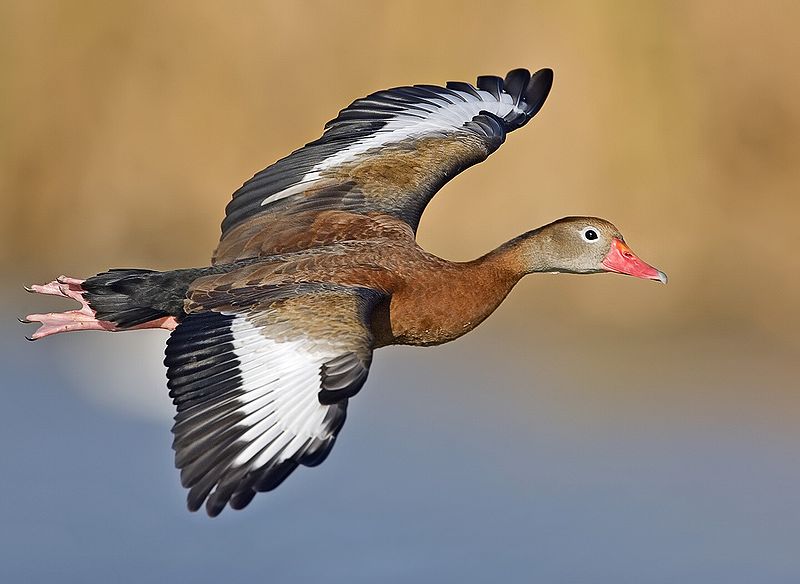
The Black-bellied whistling duck is a unique species of bird that can be found in the southern United States, Mexico, and Central and South America. This small waterfowl has distinct black plumage on its belly which gives it its name.
Its call is also distinctive as it makes high-pitched whistles to communicate with other members of its flock.
It prefers wetland habitats such as marshes, ponds, and lakes where they feed on seeds and aquatic plants like wild rice or pondweed.
During breeding season these birds form monogamous pairs nesting in trees near bodies of water.
They are migratory birds but some may remain year-round depending upon local climate conditions making them relatively common sights in certain areas during winter months when most other ducks have migrated further south for warmer weather.
Scientific classification:
| Kingdom | Animalia |
| Phylum | Chordata |
| Class | Aves |
| Order | Anseriformes |
| Family | Anatidae |
| Genus | Dendrocygna |
| Species | D. autumnalis |
Also Featured In: El Salvador Birds, Birds You’ll Find in South Texas
3. Couch’s Kingbird
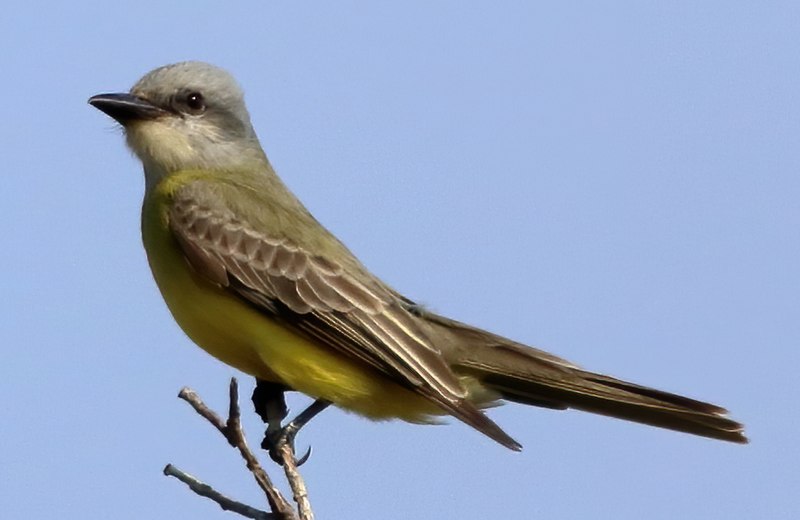
Couch’s kingbird is a passerine tyrant flycatcher found along the Gulf Coast, Yucatán Peninsula, Mexico, and northern Guatemala. Named after soldier and naturalist Darius N.
Couch, this bird measures about 7 inches long with an olive green back and yellowish underside.
It has a white throat with dark streaks on its head while also having two bold white wing bars that are visible in flight.
The tail of this species is black-tipped with whitish edges which helps it to be easily identified among other birds of similar size.
Its diet mainly consists of insects as well as berries during migration season when invertebrates become scarce in its habitat areas making it quite adaptive for survival purposes.
Scientific classification:
| Kingdom | Animalia |
| Phylum | Chordata |
| Class | Aves |
| Order | Passeriformes |
| Family | Tyrannidae |
| Genus | Tyrannus |
| Species | T. couchii |
Also Featured In: Belize Birds, Yellow Birds You’ll Find in Michigan
4. Black-Crested Titmouse
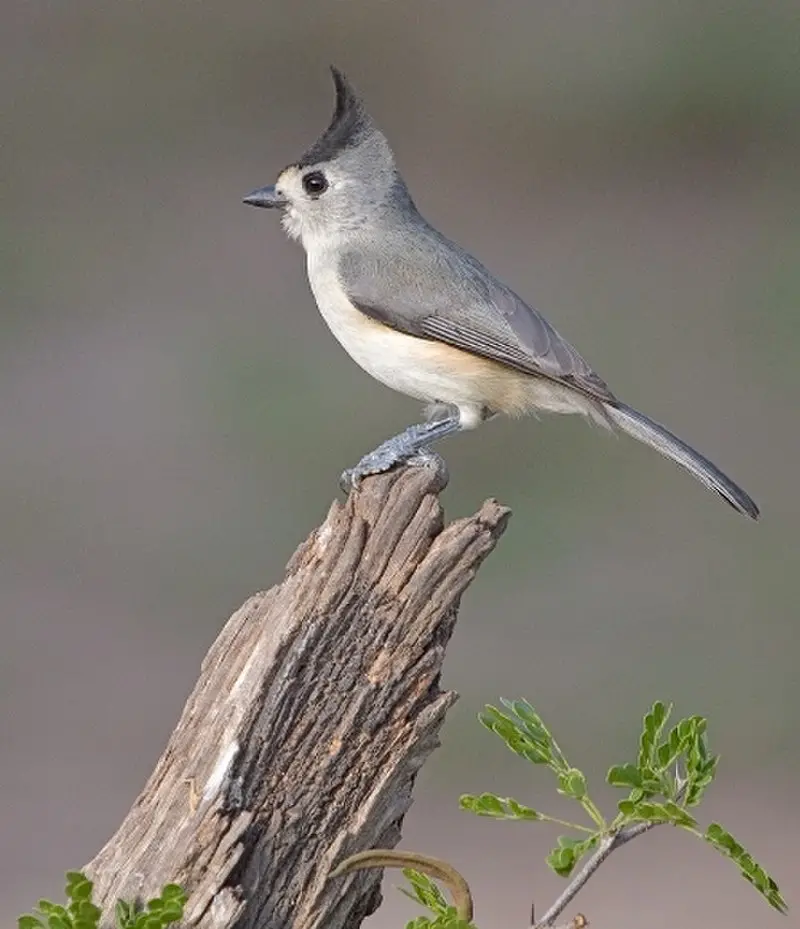
The Black-crested titmouse is a passerine bird in the Paridae family and was recently recognized as its species.
Native to southern Texas, Oklahoma, and east central Mexico, they have been known to make their way as far north and east as St. Louis Missouri through vagrancy.
The birds measure between 5 – 6 inches long with an overall grey coloring featuring white underparts and black crowns on their heads giving them the name ‘Black-crested’.
These birds are omnivores foraging for insects, fruit, or seeds depending on the seasonality of food sources available at different times throughout the year.
They form monogamous pairs typically making nests of twigs lined with grasses & feathers which both parents take part in building & raising young before fledging.
Scientific classification:
| Kingdom | Animalia |
| Phylum | Chordata |
| Class | Aves |
| Order | Passeriformes |
| Family | Paridae |
| Genus | Baeolophus |
| Species | B. atricristatus |
Also Featured In: Chickadees Birds, Central Texas Birds
5. Sun Conure
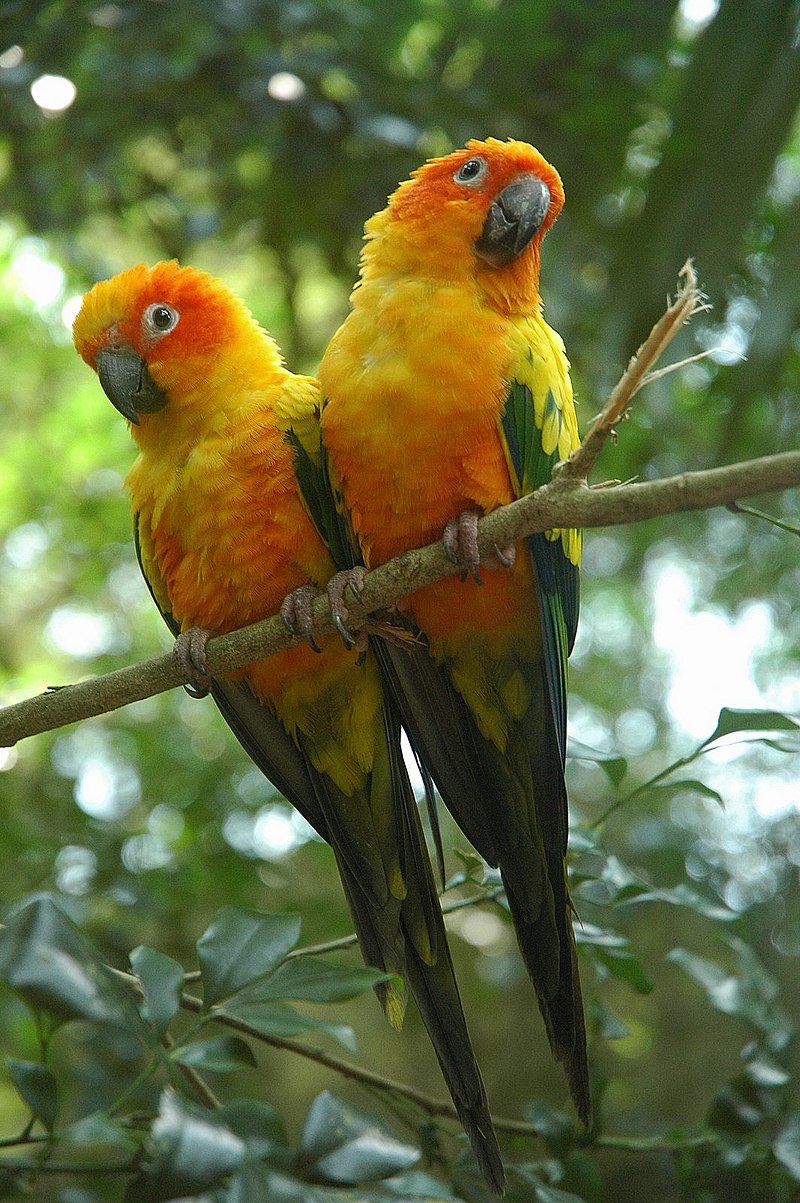
The Sun Conure is a vibrant and social species of parrot native to northeastern South America. Both males and females have predominantly golden-yellow plumage, with orange flushes under the face and wings tipped in green and blue.
They are medium-sized birds with black beaks that can make for great companions when properly cared for.
These birds love attention from their owners, so it’s important to spend quality time interacting with them regularly to ensure they remain happy and healthy.
As conures go, the Sun Conure stands out due to its bright colors which makes them popular among bird lovers around the world.
Scientific classification:
| Kingdom | Animalia |
| Phylum | Chordata |
| Class | Aves |
| Order | Psittaciformes |
| Family | Psittacidae |
| Genus | Aratinga |
| Species | A. solstitialis |
Also Featured In: Parrots Species, Aviary Birds You Should Know
6. Painted Bunting
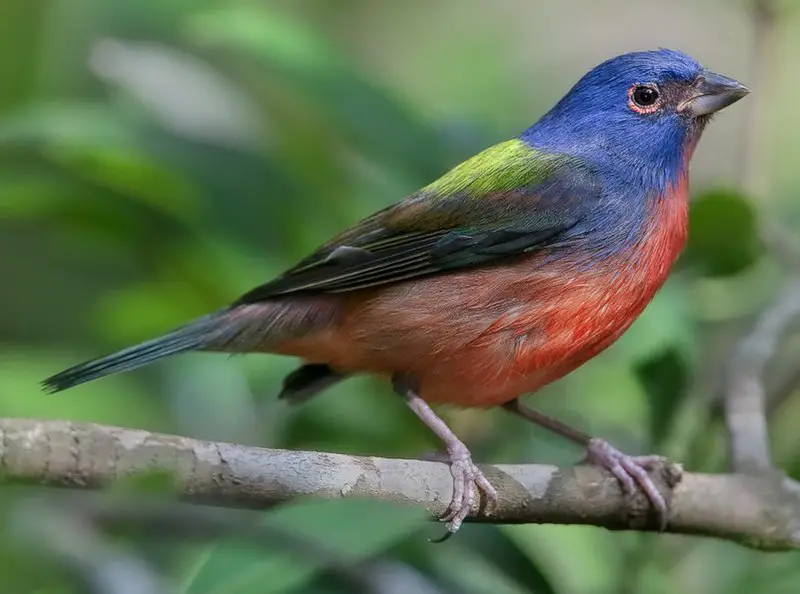
The Painted Bunting is an eye-catching bird from the Cardinal family, native to North America. It was first described by Carl Linnaeus in his eighteenth-century Systema Naturae.
The males of this species are particularly striking; they have brightly coloured plumage which only appears after their second year of life and can be distinguished from female birds through close inspection.
These colorful songbirds are a delight for any avid birder, with their vibrant hues bringing joy to nature lovers everywhere.
They often inhabit woodland areas where there is plenty of seed and insects available for them to feed on – as well as some shrubbery so that they can hide away safely when needed.
Scientific classification:
| Kingdom | Animalia |
| Phylum | Chordata |
| Class | Aves |
| Order | Passeriformes |
| Family | Cardinalidae |
| Genus | Passerina |
| Species | P. ciris |
Also Featured In: Texas Birds, Flocks Birds around Us
7. Wood Duck
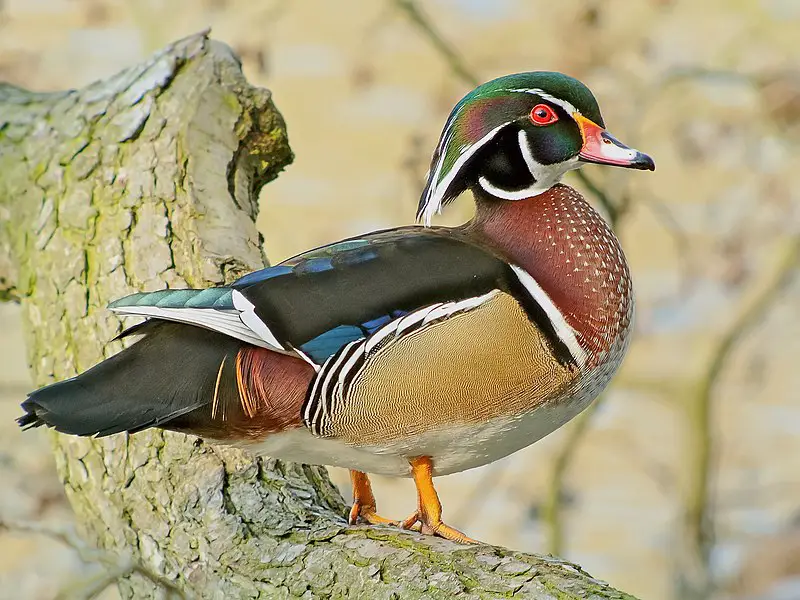
The wood duck, also known as the Carolina Duck, is a species of perching duck native to North America. It is renowned for its beautiful plumage and vibrant colors.
On average, an adult wood duck stands at 19-21 inches in length with a wingspan ranging from 26 to 29 inches. Its weight typically falls between 454–800 grams depending on gender and seasonality.
This medium-sized bird can be seen swimming or perched atop branches near bodies of water like lakes, ponds, and rivers – where it feeds mostly on aquatic plants and insects.
The female builds nests inside cavities in trees close to these waters while the male protects her eggs during the incubation period until they hatch into adorable little chicks.
Wood ducks are beloved by many due to their stunning looks which make them popular subjects among photographers too.
Scientific classification:
| Kingdom | Animalia |
| Phylum | Chordata |
| Class | Aves |
| Order | Anseriformes |
| Family | Anatidae |
| Genus | Aix |
| Species | A. sponsa |
Also Featured In: birds of New Mexico, Water Birds Live around Us
To Recap
San Antonio is home to a diverse avian population, with a variety of bird species gracing its skies and landscapes. Among the common birds found in this Texan city, the Great-Tailed Grackle stands out with its distinctive appearance and vocalizations, often seen in urban areas.
Another notable resident is the Black-Bellied Whistling Duck, known for its striking coloration and distinctive whistling calls. These are just two examples of the rich birdlife that coexists with the vibrant culture of San Antonio.
Whether you’re a seasoned birder or simply appreciate the beauty of nature, San Antonio offers ample opportunities to connect with its avian inhabitants.